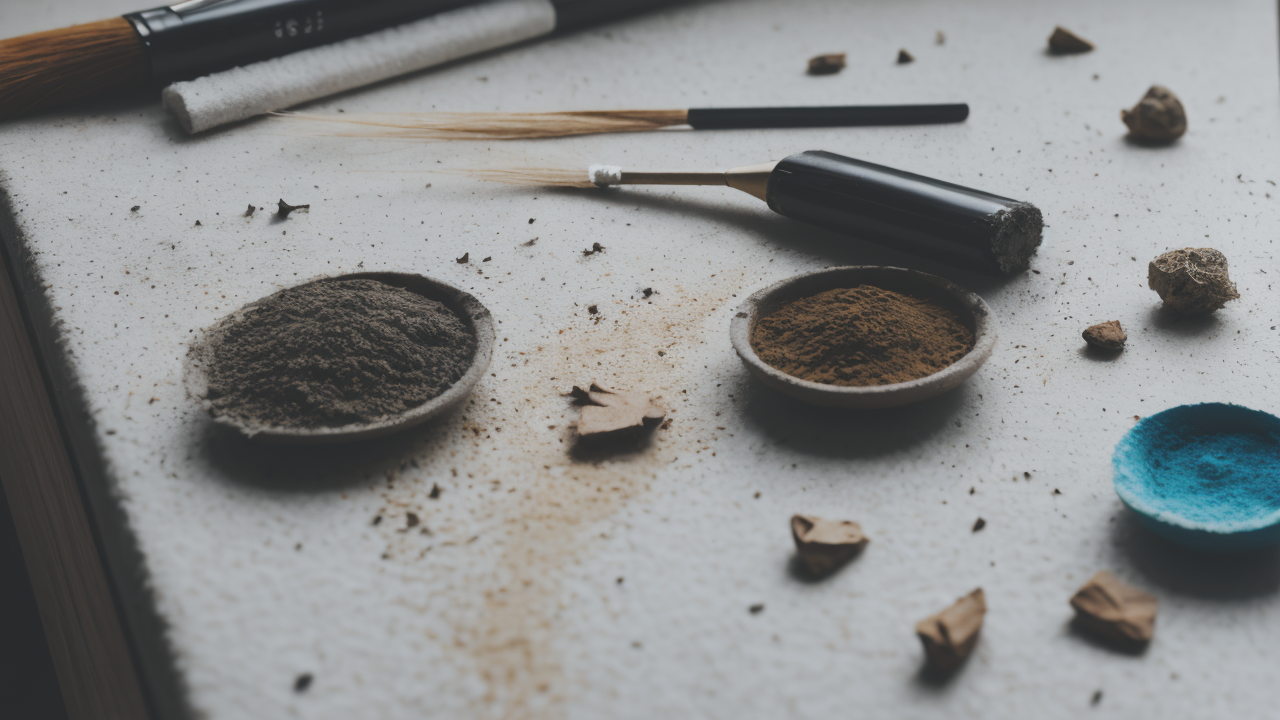
Embracing Imperfection: Exploring Dabi Art and Japanese Aesthetics
The History and Philosophy Behind Wabi-Sabi Art
Understanding the Origins of Wabi-Sabi
Wabi-sabi is a Japanese aesthetic concept that finds beauty in imperfection. It emerged in Japan during the 15th century. The term combines two ideas: 'wabi' (simplicity) and 'sabi' (the beauty of age and wear). This philosophy is deeply rooted in Zen Buddhism. It embraces the natural cycle of growth, decay, and death. In art, wabi-sabi celebrates asymmetry, roughness, and simplicity. It values objects that show their age and use. This contrasts with Western ideals of perfection and permanence. Wabi-sabi art often features natural materials and muted colors. It may include elements like cracks or weathering. The goal is to evoke a sense of tranquility and connection with nature.

The Zen Principles in Art
Zen Buddhism heavily influences wabi-sabi art. Key Zen principles include mindfulness and harmony with nature. In art, this translates to minimalist compositions and natural elements. Zen teaches that true beauty lies in the imperfect and fleeting. Wabi-sabi artists often use techniques that embrace chance. They may allow materials to crack or age naturally. The goal is to create pieces that reflect life's transient nature. Zen-inspired wabi-sabi art often features empty space, known as 'ma'. This space invites viewers to pause and reflect. It creates a sense of balance and tranquility in the artwork. The artist's role is to reveal the inherent beauty in simple, natural forms.
How Wabi-Sabi Art Has Evolved Over Time
Wabi-sabi art has changed significantly since its origins in Japan. Initially, it was closely tied to tea ceremonies and pottery. Over time, it expanded to include other forms of visual art. In the 20th century, wabi-sabi began to influence Western artists. They were drawn to its emphasis on simplicity and naturalness. Modern wabi-sabi art often blends traditional Japanese techniques with contemporary styles. Artists now experiment with a wider range of materials and colors. Some incorporate found objects or industrial elements. Digital artists have even begun to apply wabi-sabi principles to their work. The core ideas of imperfection and transience remain central to wabi-sabi art.
Painted Wabi-Sabi: An Artistic Revolution in the United States
The Emergence of Colorful Painted Wabi-Sabi
Colorful painted wabi-sabi marks a new chapter in this art form's evolution. Traditional wabi-sabi often features muted earth tones. However, American artists have begun to experiment with vibrant colors. This fusion creates a unique blend of Eastern and Western aesthetics. Bright hues are applied using wabi-sabi techniques like dripping or cracking. The result is art that is both lively and contemplative. This new style appeals to those who appreciate wabi-sabi philosophy but desire more visual impact. It's a testament to how art forms can adapt and grow in new cultural contexts. The contrast between vivid colors and wabi-sabi textures creates striking visual effects.

The Influence of Wabi-Sabi on Modern American Artists
Wabi-sabi has profoundly impacted many modern American artists. Its emphasis on imperfection resonates in a culture often focused on flawlessness. Artists find freedom in embracing accidents and natural processes. Some incorporate wabi-sabi principles into abstract expressionism. Others apply it to landscape or still life paintings. The influence can be seen in sculpture and mixed media works as well. Many artists appreciate how wabi-sabi encourages a deeper connection with materials. It has led to more experimental approaches in American art. Some artists use wabi-sabi to explore themes of time, decay, and renewal in their work.
The Popularity of Wabi-Sabi Art in the United States Market
Wabi-sabi art has gained significant popularity in the U.S. art market. Collectors are drawn to its unique aesthetic and philosophical depth. Galleries across the country now feature wabi-sabi inspired works. Art events and exhibitions dedicated to this style are becoming more common. The appeal extends beyond traditional art spaces. Interior designers often incorporate wabi-sabi pieces into their projects. This growing interest has created new opportunities for artists working in this style. It has also led to a greater appreciation of Japanese aesthetics in American culture. Many find that wabi-sabi art offers a refreshing alternative to mass-produced, perfect objects.
Implementing Wabi-Sabi Techniques in Visual Art
Tools and Materials for Creating Wabi-Sabi Pieces
Creating wabi-sabi art requires specific tools and materials. Traditional materials include:

- Natural pigments
- Handmade paper
- Clay
- Wood
- Stone
Modern artists often incorporate:
- Found objects
- Recycled materials
- Acrylic paints
- Textured mediums
- Metallic leafing
Tools may include brushes, spatulas, and various texturing implements. Some artists use unconventional tools like twigs or leaves. The key is to choose materials that allow for organic textures and imperfections. Many artists experiment with combining traditional and modern materials. This creates unique textures and effects in their wabi-sabi pieces.
Step-by-Step Guide to Painting Wabi-Sabi Art
- Prepare your surface. Choose a textured canvas or add texture to a smooth one.
- Select a limited color palette. Include both muted and vibrant colors.
- Apply a base layer using broad, imperfect strokes.
- Build layers, allowing each to partially dry between applications.
- Incorporate natural elements like sand or leaves into the wet paint.
- Use tools to create cracks or imperfections in the surface.
- Allow some areas to remain unfinished or raw.
- Add final touches with splatters or drips of contrasting colors.
- Let the piece age naturally, embracing any changes that occur over time.
Remember, the goal is to create a piece that feels organic and imperfect. Embrace accidents and unexpected results as part of the creative process. Allow the materials to guide you rather than trying to control every aspect of the painting.
Case Studies: Successful Wabi-Sabi Art Exhibits in the U.S.
Several U.S. galleries have hosted successful wabi-sabi art exhibits. The "Imperfect Beauty" show at the San Francisco Museum of Modern Art drew large crowds. It featured works by both Japanese and American artists. Visitors praised the exhibit's calming atmosphere and thought-provoking pieces. In New York, the "Transient Nature" exhibit showcased colorful wabi-sabi paintings. It received critical acclaim for its innovative approach to traditional concepts. The Los Angeles County Museum of Art held a workshop series on wabi-sabi techniques. This interactive approach helped educate the public about this art form. Participants created their own wabi-sabi inspired pieces. These exhibits have played a crucial role in popularizing wabi-sabi art in the U.S.


